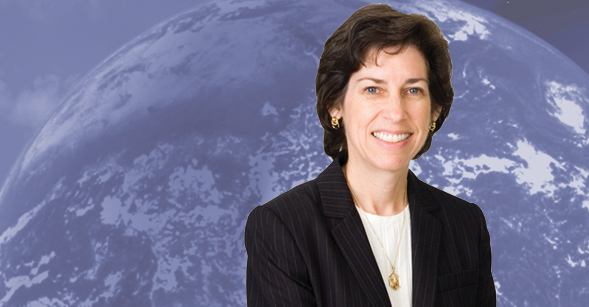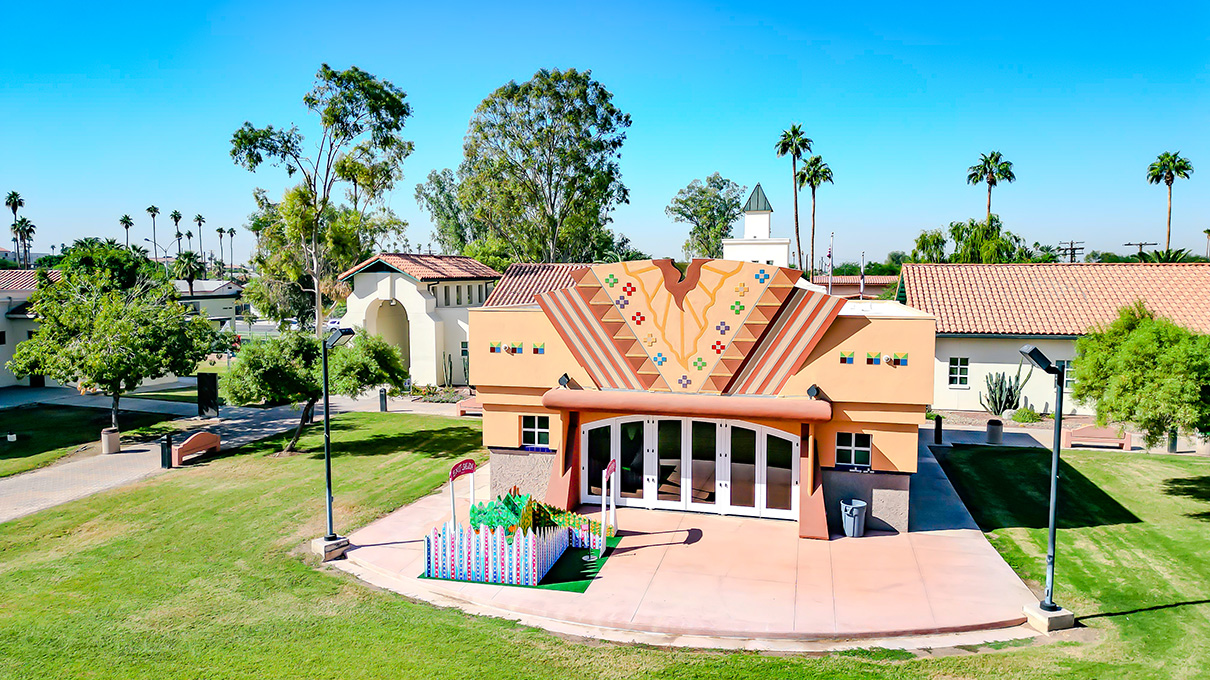Houston, We Have an Aztec
Ellen Ochoa, '80, is director of NASA's Johnson Space Center.

Q. You have been quoted as saying, “Being involved in human space flight is an emotional endeavor. It (elicits) the highest highs and the lowest lows.” What was your highest high and your lowest low?
A. The highest highs were the successful completions of the missions I was involved in, knowing that a big team effort had accomplished something challenging and meaningful. The lowest low was, of course, the Columbia accident. I was in Mission Control that morning as the manager representing the flight crew.
Q. Reflect on your time as an astronaut and tell us how it changed you.
A. I was fortunate to have amazing experiences in space: seeing the Earth from a unique vantage point, contributing to understanding the Earth’s atmosphere on a couple of science missions, helping to assemble the International Space Station, an incredible facility that now supports six international astronauts doing science and technology activities. On the ground, I learned a great deal about working as a member of a team and leading a team, which serves me well in my current position.
Q. What were your emotions before, during and after your first space mission?
A. I was mainly focused on doing the best job that I could! At every step of every procedure, I was aware that I needed to concentrate, and that people on the ground were depending on me. I realized after I landed that I hadn’t spent much time thinking about the actual experience of space. I had a hard time answering questions like “what did it feel like the moment the engines shut off?” because my thoughts had been about the next action I needed to take. So on my second flight, I tried to be more deliberate about noticing and enjoying the actual experience of being in space.
Q. How do you see the future for NASA and for U.S. space exploration?
A. My focus is to do whatever we can to move exploration forward. The International Space Station is both a science laboratory and a testbed for technology and concepts that we will need to explore beyond low earth orbit. We are also developing the Orion multi-purpose crew vehicle, the spacecraft that will take astronauts beyond low earth orbit, which is scheduled for a first test flight next year. We are encouraging commercialization of space through the commercial cargo and crew programs which will provide U.S. transportation to the International Space Station. And we work on many types of technologies that not only support human space exploration but also have important applications here on Earth, including advanced life support systems and human-robotic systems.
Q. As newly-appointed director, what are your five-year and 10-year goals?
A. For the International Space Station, we want to continue to operate safely, increase both the amount of time and the impact of the scientific and technology activities onboard, and learn more about spacecraft systems in order to enable exploration to other destinations. We have important milestones in the development of the Orion spacecraft in the next few years: an initial test flight in 2014, a combined test flight with a new rocket in 2017, and the first flight with crew in 2021. While we have planned objectives for those flights, we continue to work with NASA Headquarters to consider various options that will help demonstrate needed capabilities for eventual missions to Mars.
Q. If not science, which professional field would you have chosen?
A. When I arrived at SDSU, I was considering majors in music and business, and over the next couple of years I also considered journalism and computer science, so I had lots of different ideas! It was through my math classes that I started to explore science, and I found a welcoming and interesting environment in the physics department. I ended up minoring in math, almost by accident, when I noticed I only needed one more math class to satisfy the requirements for a minor!
Q. What is the best piece of advice you ever received?
A. A book that I have discussed both at work and at home is “7 Habits of Highly Effective People.” One of my favorites of those habits is “seek first to understand, then to be understood.” That can apply equally to a technical, operational forum where we’re debating options for addressing a spacecraft anomaly, and to discussions with my family.
Q. If you knew you could not fail, what would you attempt?
A. There’s never a guarantee of success in anything that’s difficult, so it’s really a matter of striving toward a goal and understanding that even if you don’t reach it, you will have gained in so many ways. I’ve been very fortunate to have been able to obtain many of my goals, and to have had amazing experiences. I certainly couldn’t have foreseen that when I started at SDSU, but my education there gave me a great start and the confidence to pursue the next step.
Q. What trait do you most value in friends and colleagues?
A. The NASA values of excellence, teamwork, integrity and safety are meaningful to me both professionally and personally. They encompass honesty and respect, setting and achieving high standards in every type of endeavor, combining one’s own talents with those of others, respecting what different backgrounds and experiences bring and taking care of one other.


